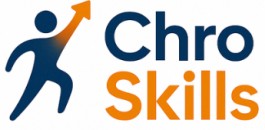
Understanding Applied Accessibility in HR
In today’s dynamic workplace, understanding applied accessibility in HR is crucial for fostering an inclusive environment. As organizations increasingly recognize the importance of diversity, equity, and inclusion, ensuring accessibility in human resources practices has become a priority.
Integrating Accessibility into HR Processes
Accessibility involves making web content and digital spaces usable for individuals with disabilities. The application of accessibility in HR encompasses integrating guidelines and standards—such as the Web Content Accessibility Guidelines (WCAG)—into HR processes to ensure all employees, regardless of ability, can access necessary information and tools.
Chief HR Officers (CHROs) must ensure that employment spaces adhere to accessibility requirements, facilitating a welcoming atmosphere for everyone. This includes addressing website accessibility, user interfaces, and digital content to meet standards like WCAG's Level AA or AAA if possible. Organizations can minimize barriers by adopting these accessibility standards, ensuring compliance and fostering broad-based engagement.
Understanding Legal and Compliance Aspects
Another critical aspect of adopting applied accessibility in HR is understanding the legal landscape. CHROs must be familiar with Title III of the Americans with Disabilities Act (ADA) and the respective accessibility guidelines. These standards mandate that public and private entities ensure accessible access to all digital services and physical spaces.
This understanding enables HR leaders to champion policies that support an inclusive company culture, actively preventing discrimination against individuals with disabilities. Addressing these legal aspects not only fosters an equitable workplace but also minimizes risks associated with non-compliance with expectations set by the Department of Justice.
Promoting an Inclusive Culture
An essential element of effectively applying accessibility is building a culture that consciously promotes inclusiveness throughout the organization. It’s not just about meeting standards but prioritizing an environment where all employees contribute meaningfully.
For CHROs, strategic initiatives that underscore the importance of digital accessibility create more opportunities for workplace innovation and employee engagement. By adapting to diverse working styles, organizations can encourage diverse talent to flourish.
Key Skills for a CHRO in Promoting Accessibility
Essential Characteristics for Promoting Accessibility as a CHRO
Promoting accessibility within an organization is a critical responsibility of a Chief Human Resources Officer (CHRO). Understanding and implementing accessibility standards requires developing a unique set of skills. These skills not only focus on adhering to the guidelines and requirements but also on fostering an inclusive environment. Firstly, a CHRO should possess a deep comprehension of accessibility guidelines, including the Web Content Accessibility Guidelines (WCAG). These guidelines provide a comprehensive framework to ensure digital content is accessible to everyone, including people with disabilities. Familiarity with success criteria outlined in WCAG is vital as these criteria serve as benchmarks for compliance. Secondly, the ability to evaluate and apply digital accessibility standards is crucial. A CHRO must ensure that all digital content, whether it's on a website, an internal web platform, or public-facing applications, meets the necessary accessibility requirements. This involves a strong understanding of user interface design and how to integrate features such as alt text to cater to individuals with disabilities. Additionally, collaboration skills are paramount. Enhancing accessibility requires working alongside local government entities, the department of justice, and various stakeholders to understand and implement standards at both state and local levels. It's not just about adherence to title iii of the ADA but about building a culture of inclusivity. Moreover, communication skills are critical. A CHRO should effectively convey the importance of web and digital accessibility to all levels of the organization, ensuring that accessibility is a shared responsibility. This includes advocating for content accessibility in departmental strategies and providing clear guidelines for other leaders to follow. Finally, continuous learning is an essential trait. Staying updated with evolving accessibility guidelines and technology enhancements ensures that an organization not only meets current standards but also anticipates future requirements. Continued education and adaptation facilitate a proactive approach to accessibility. Incorporating these skills enables a CHRO to lead accessibility initiatives effectively, creating an inclusive environment that serves not only individuals with disabilities but also the broader community. Learn more about exploring the impact of diverse leadership on accessibility initiatives here.Building an Inclusive Culture
Fostering an Environment of Inclusion
Creating an inclusive culture within an organization is essential for promoting accessibility. A Chief Human Resources Officer (CHRO) plays a pivotal role in this process by ensuring that the workplace is welcoming and accommodating to all employees, including those with disabilities. This involves not only meeting accessibility requirements but also embedding these principles into the organizational ethos.
To build an inclusive culture, it is crucial to apply accessibility standards across all levels of the organization. This includes adhering to accessibility guidelines such as the Web Content Accessibility Guidelines (WCAG) to ensure that digital platforms are accessible to everyone. By doing so, organizations can provide equal access to information and resources, which is a fundamental aspect of inclusivity.
Implementing Accessibility Standards
Implementing accessibility standards involves more than just compliance with legal requirements like Title III of the Americans with Disabilities Act. It requires a proactive approach to designing user interfaces and web content that are accessible to people with disabilities. This includes using alt text for images, ensuring that text is readable, and meeting the success criteria outlined in the WCAG.
Moreover, organizations should strive to achieve Level AAA compliance, which represents the highest standard of accessibility. This level of commitment demonstrates a genuine dedication to inclusivity and can significantly enhance the user experience for individuals with disabilities.
Engaging the Workforce
Engaging the workforce in accessibility initiatives is another critical component of building an inclusive culture. This can be achieved through regular training and development programs that raise awareness about accessibility issues and equip employees with the skills needed to create accessible content. By fostering a culture of continuous learning, organizations can ensure that accessibility remains a priority.
For more insights on enhancing skills in this area, consider exploring just-in-time training for HR leaders. This approach can help HR professionals stay updated with the latest accessibility trends and best practices, ultimately contributing to a more inclusive workplace.
Leveraging Technology for Accessibility
Leveraging Digital Tools for Greater Accessibility
In today's digital age, technology serves as a vital tool in promoting accessibility within organizations. Understanding how to effectively leverage technology not only facilitates the creation of inclusive workplaces but also aligns with established accessibility standards and guidelines, like the Web Content Accessibility Guidelines (WCAG). Organizations must ensure that their digital platforms, including websites and intranets, adhere to high levels of accessibility. Implementing WCAG standards is crucial. These include providing alt text for images, ensuring text is legible, and maintaining a user interface that supports easy navigation for individuals with disabilities. For web content to be accessible, it's imperative to meet the requirements for different user groups, including those with visual, auditory, physical, and cognitive disabilities. This means designing content that is not only accessible but also engaging and adaptable to various assistive technologies. It's also important for CHROs to ensure that local and state government guidelines are applied to digital accessibility initiatives. This can include adhering to public sector guidelines and Title III of the Americans with Disabilities Act, which emphasizes website accessibility for state and local governments. Moreover, as organizations work to build an inclusive culture, they must prioritize accessibility in their digital designs. Digital accessibility enhancements should go beyond compliance, aiming for a Level AAA success criterion, which represents the highest accessibility level of the WCAG. By integrating advanced technology solutions, CHROs can improve access for employees with disabilities, ensuring that every team member can interact with digital content without barriers. This not only enhances user experience but also reflects a commitment to inclusivity and diversity.Training and Development for Accessibility Awareness
Equipping Teams with Accessibility Tools
In order to foster a more inclusive environment, it's essential for HR leaders to emphasize the importance of accessibility in training and development programs. Empowering teams with the knowledge and tools they need to create accessible content is critical. This includes ensuring that team members are familiar with the Web Content Accessibility Guidelines (WCAG) and understand how to apply accessibility standards in their work.- Incorporate Accessibility into Training Modules: Develop training sessions focusing on the application of WCAG levels, such as Level AAA compliance. This helps equip your staff with the capabilities to design interfaces that are accessible to individuals with disabilities.
- Collaborate with Experts: Collaborate with accessibility experts to provide workshops that cover crucial aspects like alt text for images, accessible design requirements, and creating user-friendly web interfaces.
- Regularly Update Training Content: It’s vital to keep training programs updated with the latest web accessibility standards and guidelines, including updates from state local governments and organizations such as the Department of Justice.
- Practical Hands-on Experience: Encourage participation in cross-departmental projects that require implementing these standards, ensuring that every member gains practical experience in making digital content accessible.
Measuring the Impact of Accessibility Initiatives
Evaluating the Effectiveness of Accessibility Initiatives
To ensure the success of accessibility initiatives, it's crucial to measure their impact on both the organization and its stakeholders. Evaluating the effectiveness of these efforts allows a Chief Human Resources Officer (CHRO) to align with accessibility standards, optimize resources, and continuously improve access for people with disabilities. Here are key considerations when assessing the impact of accessibility initiatives:
- Adherence to Accessibility Guidelines: Regularly verify that your digital content complies with WCAG guidelines, including the success criteria and level AAA standards. These serve as a benchmark to ensure web content is accessible to all users, regardless of their abilities.
- User Feedback: Solicit feedback from individuals with disabilities who engage with your content. Their insights provide valuable information on the accessibility and usability of your web presence.
- Quantitative and Qualitative Metrics: Collect data on usage patterns, user satisfaction, and participation rates in accessibility programs. This data offers a comprehensive view of how accessibility initiatives impact employee experience and public access.
- Technology Deployment: Analyze how effectively technology is leveraged to promote accessibility, such as the use of alt text, accessible web design, and user interface modifications. Ensure these technological solutions meet the needs of users with varying disabilities.
- Compliance with Legal Requirements: Stay updated with state and local government accessibility requirements, as well as guidelines set forth under title iii, to ensure your organization adheres to legal obligations. This includes maintaining communication with the Department of Justice on accessibility standards.
- Departmental Collaboration: Encourage cross-functional collaboration to align accessibility efforts with broader HR initiatives. The collective input from various departments can enhance the reach and effectiveness of accessibility programs.
Through systematic evaluation, a CHRO can not only gauge the success of current accessibility efforts but also identify opportunities for future improvements, all while fostering a more inclusive culture. By building on the insights gained from this evaluation, organizations can maintain their commitment to accessibility and ensure a more inclusive environment for all individuals.













